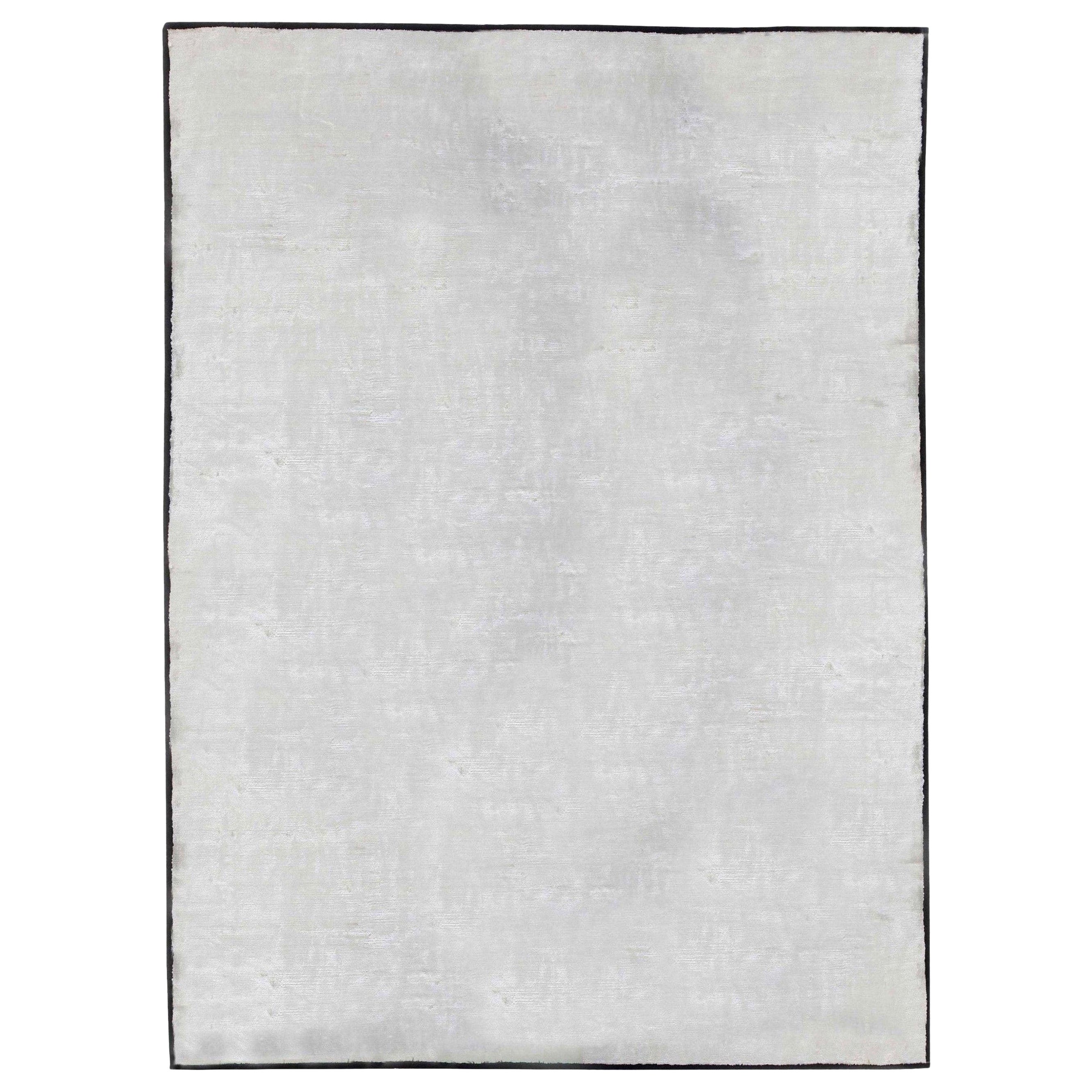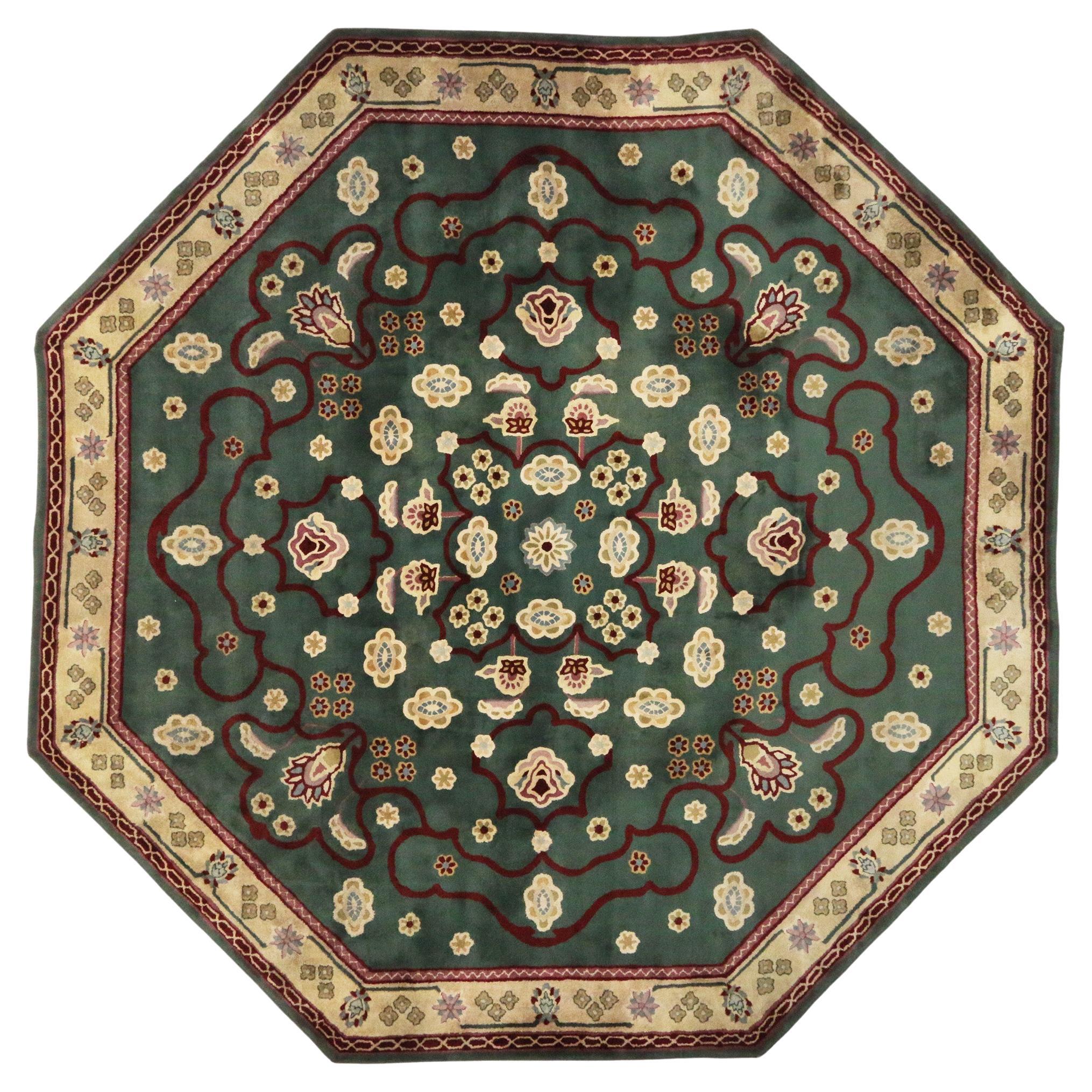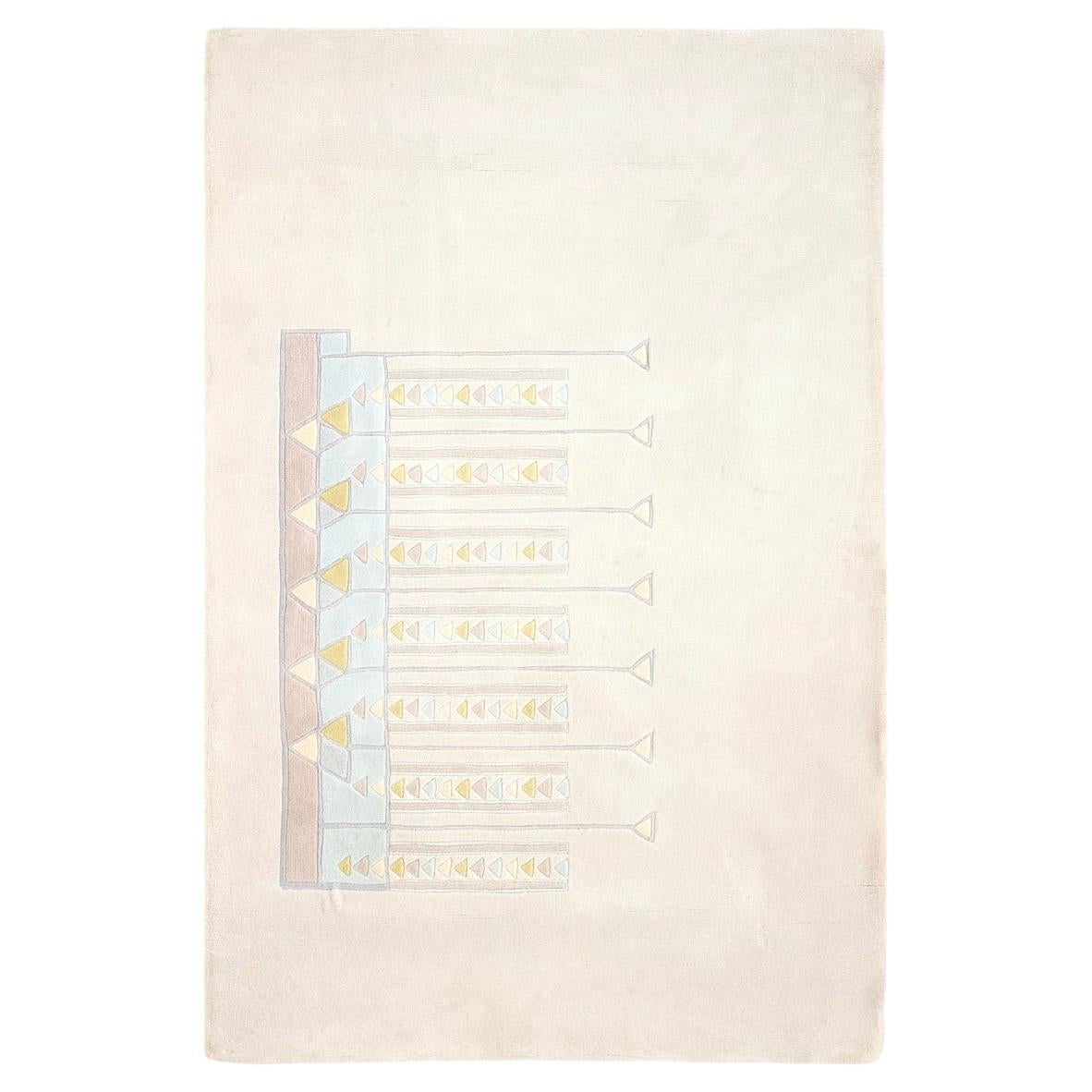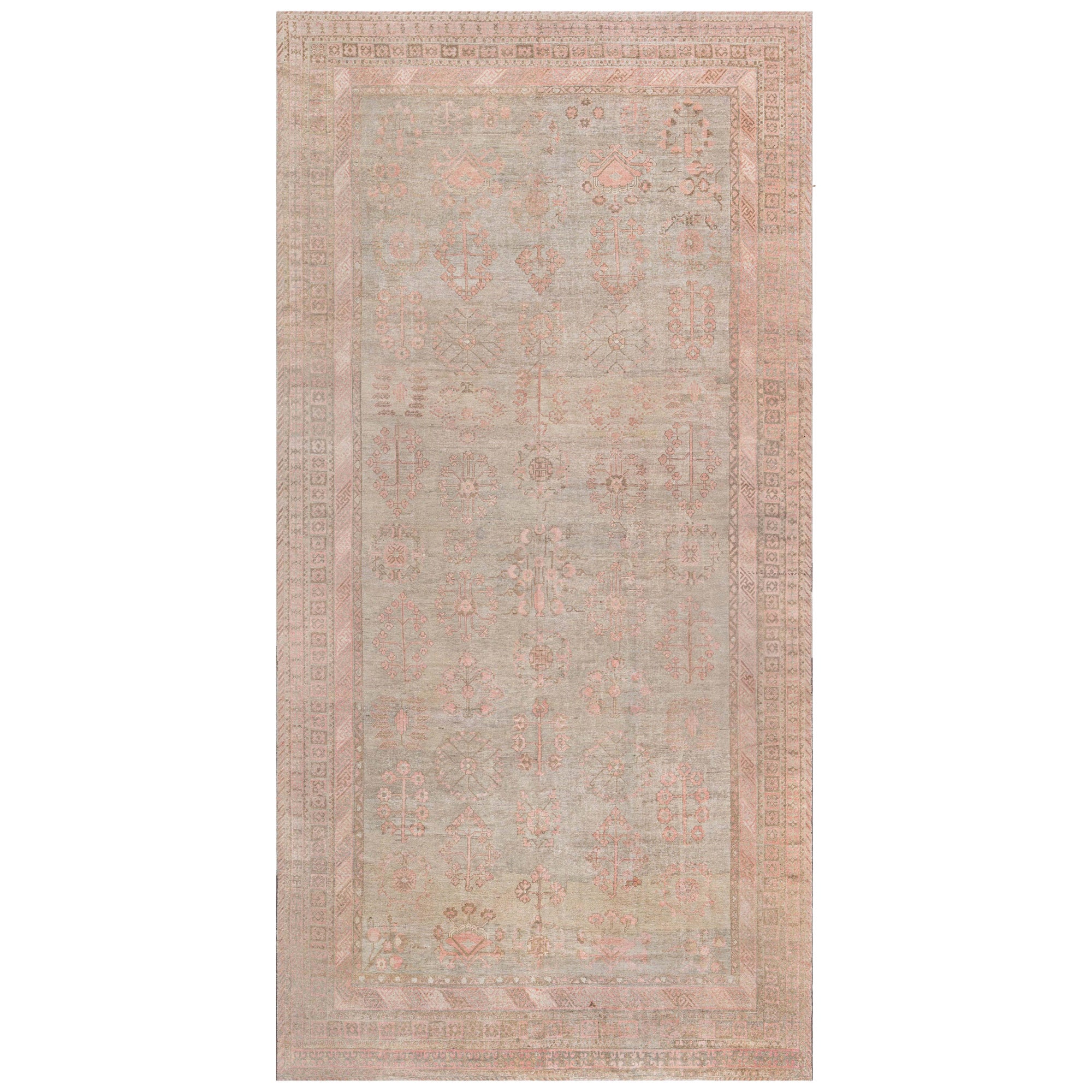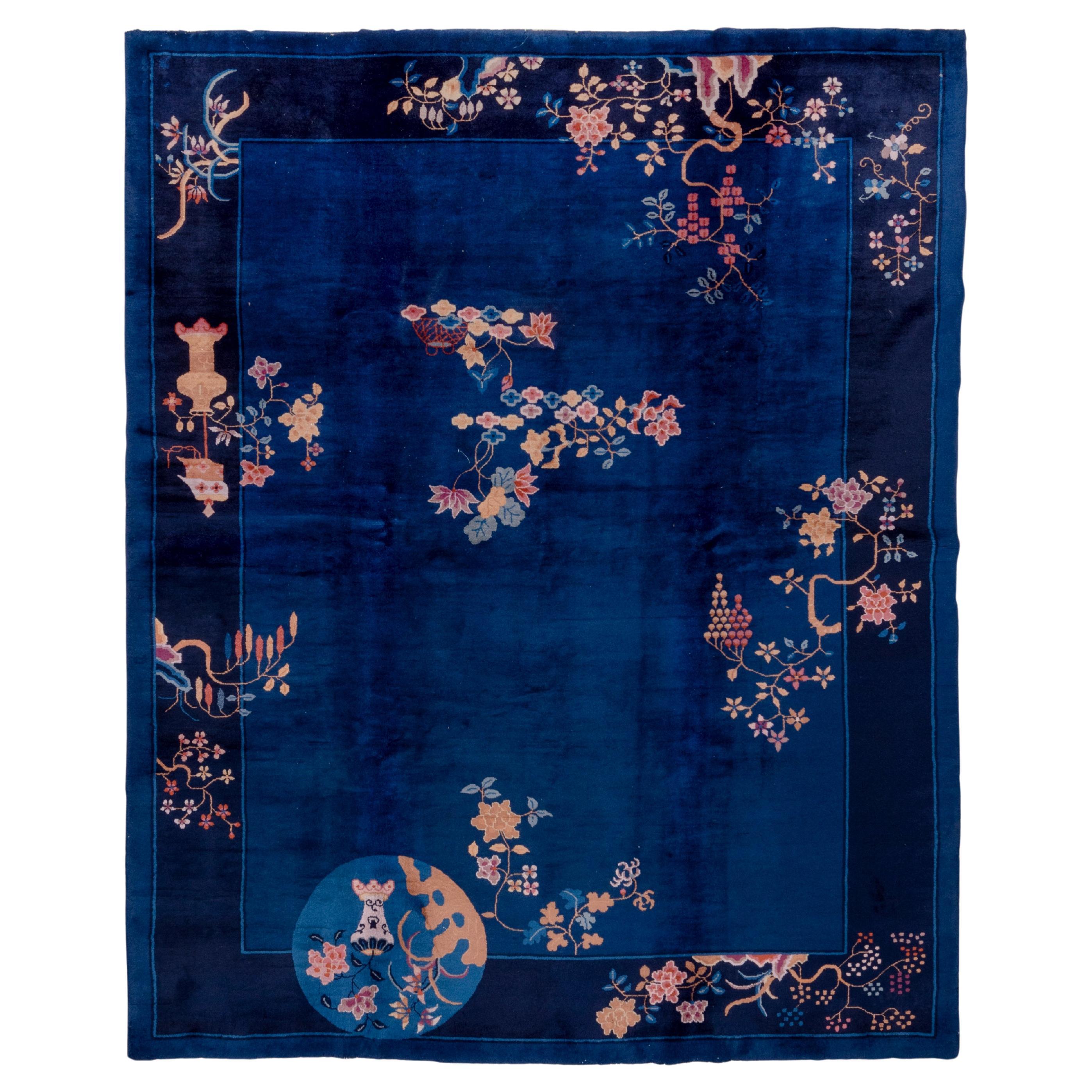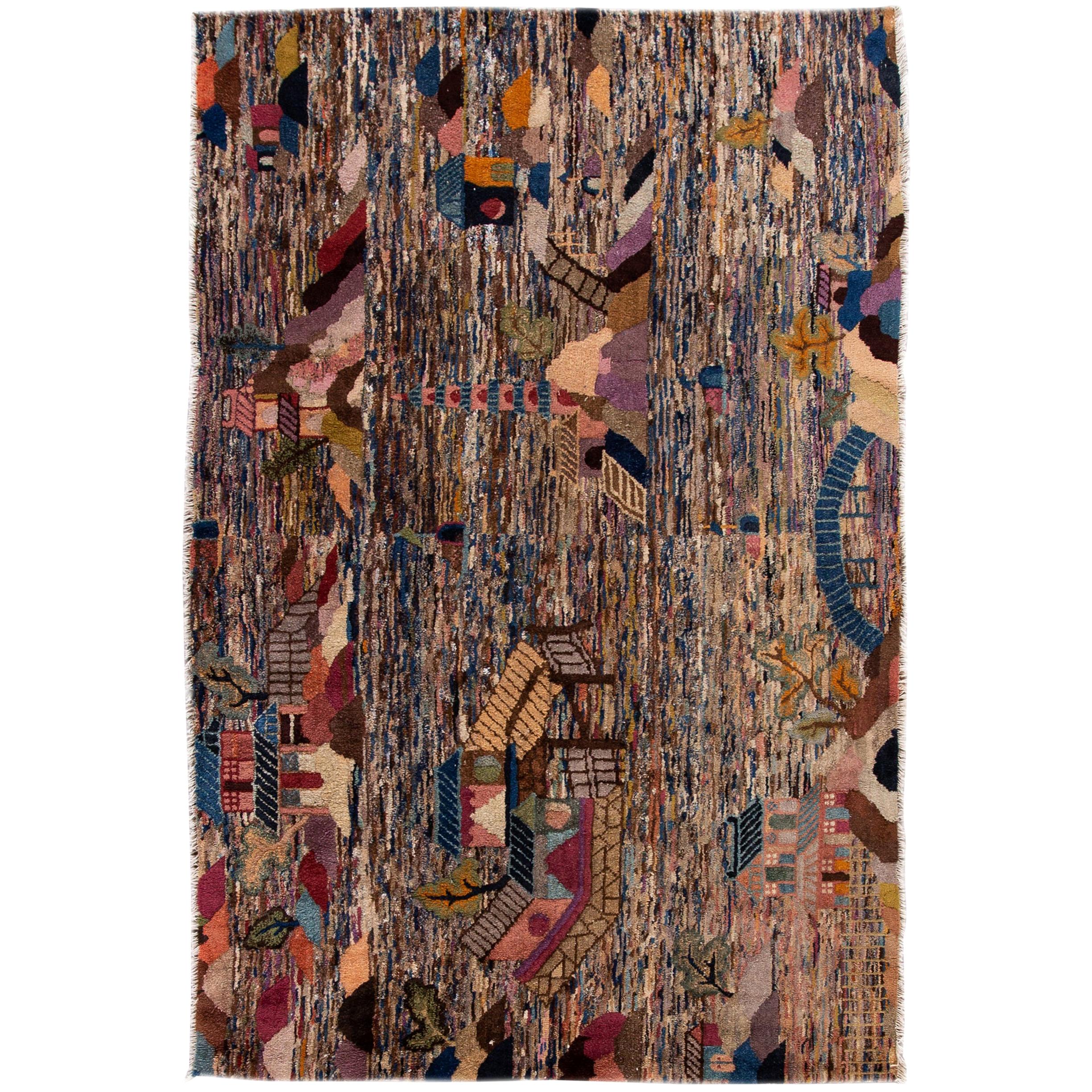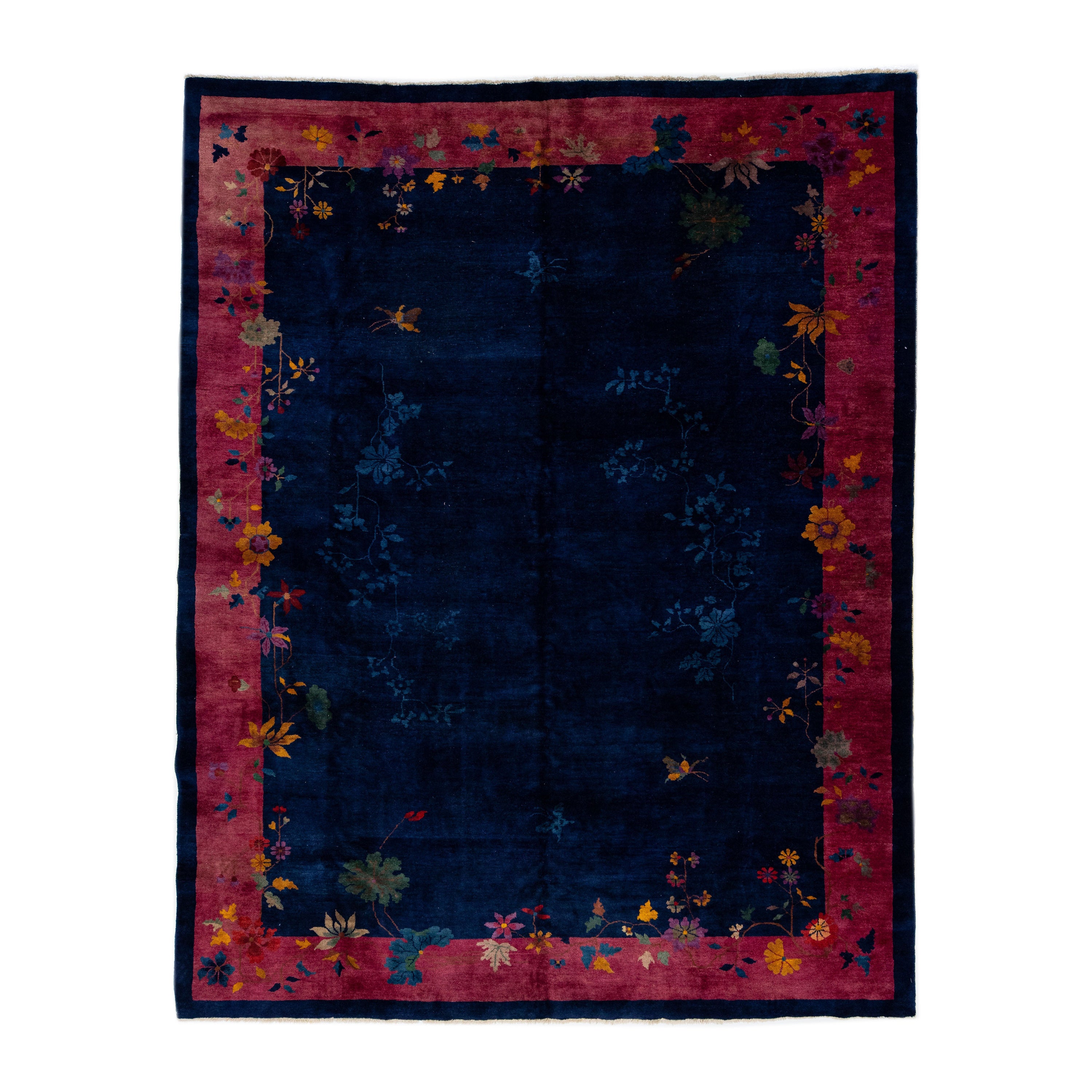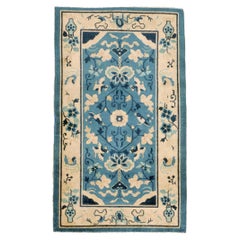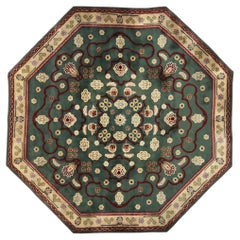
Midcentury Handmade United States Naval Academy Rug in Navy Blue
View Similar Items
Want more images or videos?
Request additional images or videos from the seller
1 of 10
Midcentury Handmade United States Naval Academy Rug in Navy Blue
About the Item
- Dimensions:Width: 36 in (91.44 cm)Length: 58 in (147.32 cm)
- Style:Federal (In the Style Of)
- Materials and Techniques:Wool,Hand-Knotted
- Place of Origin:
- Period:
- Date of Manufacture:circa 1940
- Condition:
- Seller Location:New York, NY
- Reference Number:Seller: 266261stDibs: LU882312960231
About the Seller
5.0
Platinum Seller
These expertly vetted sellers are 1stDibs' most experienced sellers and are rated highest by our customers.
Established in 1989
1stDibs seller since 2009
560 sales on 1stDibs
Typical response time: 1 hour
More From This SellerView All
- Mid-20th Century Handmade Chinese Art Deco Throw Rug in BlueLocated in New York, NYA vintage Chinese Art Deco throw rug handmade during the mid-20th century in blue. Measures: 2' 11" x 4' 10".Category
Mid-20th Century Chinese Art Deco Chinese and East Asian Rugs
MaterialsWool
- Mid-20th Century Handmade Chinese Accent Rug in Cerulean Blue and CreamLocated in New York, NYA vintage Chinese Peking accent rug handmade during the mid-20th century with a cerulean blue field, cream medallion, border, and corner spandrels, and dark blue guard borders. Me...Category
Mid-20th Century Chinese Chinoiserie Chinese and East Asian Rugs
MaterialsWool
$5,000 Sale Price20% Off - Mid-20th Century Handmade Chinese Peking Throw Rug in Cream and Light BlueLocated in New York, NYA vintage Chinese Peking throw rug handmade during the mid-20th century with a cream border and light blue field. Measures: 2' 6" x 4' 3" The craft of the hand-knotted carpet in China, and the surrounding areas including Mongolia and Tibet, extends into the early centuries of the first millennium, C.E., but we really have a firm grasp only beginning in the later 16th century with large, very coarsely woven carpets, often depicting dragons, created for the Imperial Forbidden City palaces. Chinese carpets have always been commercial and there are no tribal groups responsible for any of the carpet weaving strains. When the Ming Dynasty fell in 1644, with no Imperial patrons, production moved to the city of Ningxia in north central China where several workshops turned out more finely woven pieces for the Mandarins of the administrative Ch’ing bureaucracy and well-to-do merchants. Ningxia was the major Chinese carpet center up through most of the 19th century, with first allover and then medallion designs on cotton foundations in medium weaves. Palettes were initially limited to yellows, dark blue and cream, but later widened to include reds, browns and even green. These antiques were the first Chinese carpets to be exported to the West and they fitted in well with the craze for Chinese blue-and-white porcelain in the second half of the 19th century. Ningxia also wove shaped and rectangular small rugs for saddle underlays, chair (“throne”) seats and shaped backs, pillar carpets with dragons or monks for Buddhist monasteries, and long divided runners for monastery meditation halls. These small rugs are among the most collectible of all Chinese weavings. Weavers from Ningxia set up workshops in the capital Peking (Beijing) in the 1860’s and began weaving Western room sizes for export, primarily to America. In blue – and – white and polychrome palettes, with round wreath medallions, precious objects, seasonal flowers, paeonies, lotuses, fretwork, clouds, butterflies and bats, all relatively spaciously drawn. The round “Shou” (Good Luck) character is also a prominent decorative motif. There are also a few Peking landscape pictorials with pagodas, houses, bridges, waterscapes and boats. Peking carpets were woven right up until WWII and production began again after the Cultural Revolution around 1970. They are moderately well-woven, on cotton foundations, exactingly executed and indisputably Chinese. Many are in the blue-and-white style. Nothing else looks like a Peking carpet and for a Chinese “look” in a room, they are absolutely indispensable. Sizes range from scatters and a few runners, through the popular 9’12’ size, to large carpets over 20’ which must have been special orders. The earliest Peking Revival carpets are pliable and fairly thin, but they became heavier and more compact in the 20th century, in competition with Art Deco carpets from Tientsin. The modern, post- 1970, pieces are in the traditional Peking style, but are a little too regular and neat. Exactitude has been favored over character, as hard to explain that as it is. There are a number of all-silk and silk-and –metal thread pieces, many with inscriptions purporting to link them with rooms in the Imperial palaces, bringing very substantial auction prices, but none are really antique. The genre emerged after WWI and the present demand comes from mainland Chinese. The silk piles often stand in pattern relief against flat woven gold metal thread grounds. The inscriptions are apocryphal, the rugs are flashily opulent, perfect for nouveaux riches. The Art Deco period between the two World Wars saw a distinctive carpet industry developing in Tientsin (Tianjin) in northeastern China. These are highly prized for their transitional design character, neither overtly Chinese, nor abstractly modern/contemporary. Woven exclusively for export, usually by and for American firms, such as Nichols and Elbrook, they are totally in the “Jazz Age Modern” style of the 1920’s, often without borders, with abstract or abstracted patterns, and only with, at best, a few Chinese-y pattern elements. Vases asymmetrically placed in the corners are features of some of the more Chinese-y carpets. Open fields with floral sprays and branches growing in from the edges are anther design innovation. Often, Chinese motives have been re-imagined in more sharp-edged, abstract manners. Some have no references whatsoever to natural elements. The patterns are sharp and the rugs are never subdued, soft or restrained. The rugs are heavily constructed, with crisp, unfading dyes and medium to medium coarse weaves on cotton foundations. All are extremely well-executed, with none of the vagaries, variations or twists found on even high-quality Persian rugs. The majority are in the 9’ by 12’ format and a surprising number can be found in top condition. There also was a substantial production in Peking from, especially from the Fette factory. Elliptical and round carpets, and lighter, often pastel colors, were a specialty. Nothing looks like an Art Deco Chinese and they work well with traditional Chinese furniture and the most modern decor as well. These is no substitute for a good Chinese Art Deco carpet. Chinese carpets also include small scatters from Tibet, with high quality wool, floating dragons and allover textile patterns. The colors of vintage and modern pieces are bright, but there are antique small rugs...Category
Mid-20th Century Chinese Art Deco Chinese and East Asian Rugs
MaterialsWool
- Midcentury European Inspired Handmade Khotan RunnerLocated in New York, NYA vintage East Turkestan Khotan rug in runner format handmade during the mid-20th century. The design is unusual for a traditional Khotan and is clearly inspired by European designs ...Category
Mid-20th Century East Turkestani Arts and Crafts Chinese and East Asian ...
MaterialsWool
- Mid-20th Century Handmade American Rag RugLocated in New York, NYA vintage American rag rug handmade during the mid-20th century. Measures: 3' 6" x 5' 8" North American rugs & carpets: North American has never developed a unified handmade rug tradition, but rather it is the unassimilated confluence of several. From Mexico comes the Saltillo serape wearing blanket, and this stimulates the Navajo and Rio Grande (Colorado) weavers, first as blankets, then as rugs. The thrifty habits of rural America gave rise to the New England (and Western Canadian) hooked rug types, while the farmers of the Midwest recycled their disused garments into braided and rag rugs. The closest to a real ongoing tradition are the Southwestern (New Mexican) Navajo rugs. By the 1860s the native tribes were weaving wearing blankets with wool from the Spanish churro sheep. These were in stripe design, with combinations of undyed wool with cochineal reds and indigo blues. The multi-phase “Chief’s Blankets” from the 1870s-80s are a natural outgrowth of these. Machine spun red wool from Germantown in Pennsylvania appeared in the 1870s with a bright red hitherto unobtainable. The weavers loved it and blankets appeared with bright reds, generally aniline, in “eye dazzler” patterns. Anglo traders established posts beginning in the 1890s. Navajo weavings were perfect accompaniments not only for Western-themed decors, but for East Coast apartments, only they needed to be thicker and more rug like to be truly accepted. The traders brought Caucasian and Turkish village rugs to copy, borders were introduced and central medallions devised. The weavers continued to create on vertical looms, with a shared warp (dovetailing) weft structure to avoid slits. The warps were cotton string. Sizes were generally scatters, but occasionally a special order came in, hence antique room size Navajos are very rare and very pricey. Distinct village/pueblo styles developed. Among the best are: Two Grey Hills (considered the tightest, closest of all Navajo weaving), Crystal Springs, and Ganado. Certain new patterns such as the “Storm pattern” with jagged lightning bolts emanating from a dark cloud developed. The Yei rug with dancing Kachina doll figures became popular. The palette has been expanded beyond the classic grey, tan, dark brown, and cream natural wool combination to again include reds, blues, and greens. Navajo pictorials include American flags, trains, and automobiles, domestic and local scenes and scenery. Individual artist weavers now command gallery shows and correspondingly elevated prices. There are several levels of Navajo work, and antique and vintage scatters with simple flat designs, medium weaves, and tritonal palettes, and in good floor worthy condition are still available reasonably. The Native American weaving tradition extends into Colorado with two-piece scatters with sharp sawtooth medallions and striped end borders, with wool tapestry weave on cotton warps. These descend from the Saltillo blankets...Category
Mid-20th Century American Folk Art North and South American Rugs
MaterialsWool, Cotton, Yarn
- Early 20th Century Handmade Khotan Accent Rug in BrownLocated in New York, NYAn antique East Turkestan Khotan accent rug handmade during the early 20th century primarily bitonal in shades of brown. The small ivory motifs add a...Category
Early 20th Century East Turkestani Rustic Chinese and East Asian Rugs
MaterialsWool
$3,300 Sale Price20% Off
You May Also Like
- Modern Handmade Silk Rug by Doris Leslie BlauLocated in New York, NYModern handmade silk rug by Doris Leslie Blau. Size: 11'3" × 16'4" (342 × 497 cm). Minimalism in design, this hand knotted modern grey rug is brilliant in its simplicity. Thanks to t...Category
21st Century and Contemporary Tibetan Modern Chinese and East Asian Rugs
MaterialsSilk
- Vintage Oversize Octagon Edward Fields Rug with Regal Old World StyleLocated in Dallas, TX74648 Vintage Edward Fields Octagon Rug, 16'00 x 16'00. Edward Fields rugs are renowned luxury rugs known for their exceptional craftsmanship and custom de...Category
Late 20th Century American American Classical North and South American Rugs
MaterialsWool
- Frank Lloyd Wright, F. Schumacher & Co Taliesin Collection Medium-Pile Wool RugBy Frank Lloyd Wright, SchumacherLocated in Brooklyn, NYFrank Lloyd Wright for F. Schumacher & Co. Taliesin Collection medium-pile Wool Rug. Papyrus (abstracted as lines and triangles, pale green, lavender, c...Category
Late 20th Century American Prairie School North and South American Rugs
MaterialsWool
$7,900 Sale Price50% Off - Contemporary Reservoir Silk and Wool Rug by Brett Beldock for Doris Leslie BlauLocated in New York, NYContemporary Reservoir silk and wool rug by Brett Beldock for Doris Leslie Blau Size: 9'0" × 12'0" (274 × 365 cm). A contemporary hand knotted silk and wool rug in shades of beige and brown, designed by Brett Beldock. The designer has gained acclaim for her crisp, creative, yet off-beat approach to home furnishings...Category
21st Century and Contemporary Nepalese Modern North and South American Rugs
MaterialsWool, Silk
- Midcentury Samarkand Handmade Wool RugLocated in New York, NYMid-20th Century Samarkand Handmade Wool Rug Size: 8'10" × 17'4" (271 × 530 cm) This beautifully performed pile-woven rug from Samarkand is an original and unique piece of art. Tradi...Category
Mid-20th Century Afghan Chinese and East Asian Rugs
MaterialsWool
- Antique Chinese Peking Handmade Floral Wool Runner in Navy BlueLocated in Norwalk, CTBeautiful antique Peking Chinese hand-knotted wool runner with a navy blue field. This Chinese rug has multi-color accents in a gorgeous all-over Chinese floral design. This rug ...Category
20th Century Chinese Chinese Export Chinese and East Asian Rugs
MaterialsOther
